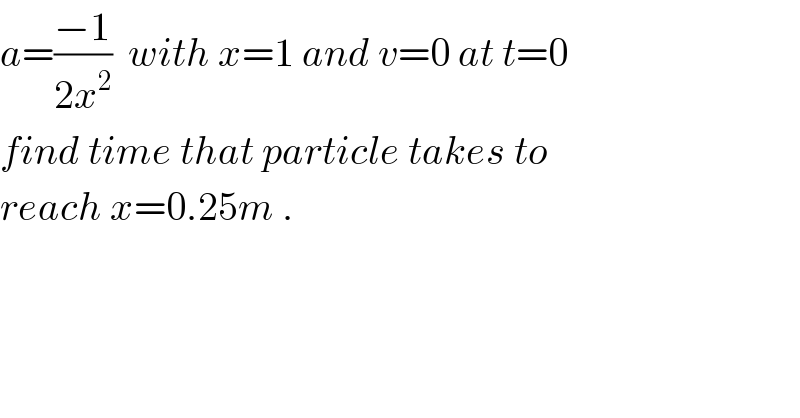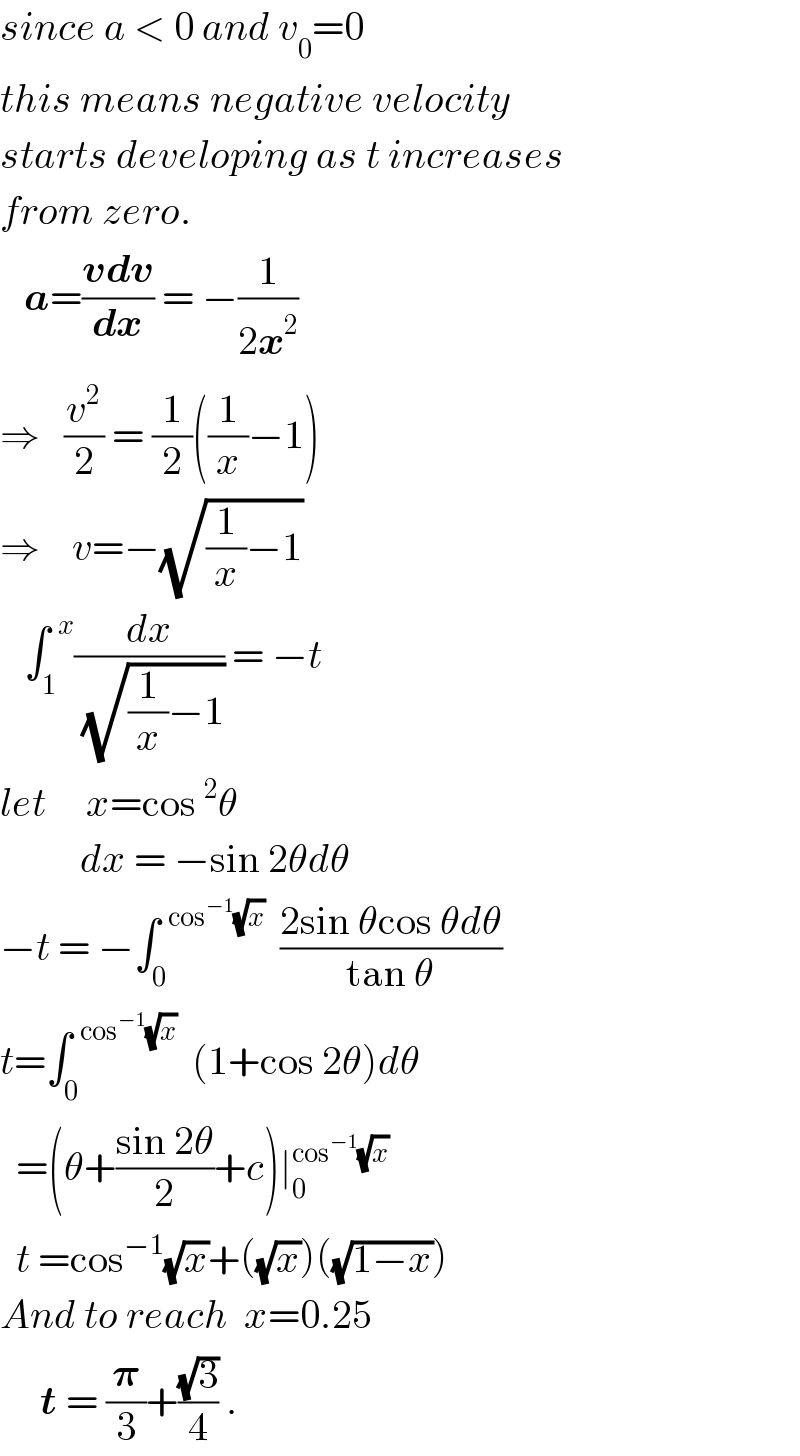
Question and Answers Forum
Question Number 37579 by ajfour last updated on 15/Jun/18

Answered by ajfour last updated on 15/Jun/18

| ||
Question and Answers Forum | ||
Question Number 37579 by ajfour last updated on 15/Jun/18 | ||
 | ||
Answered by ajfour last updated on 15/Jun/18 | ||
 | ||
| ||